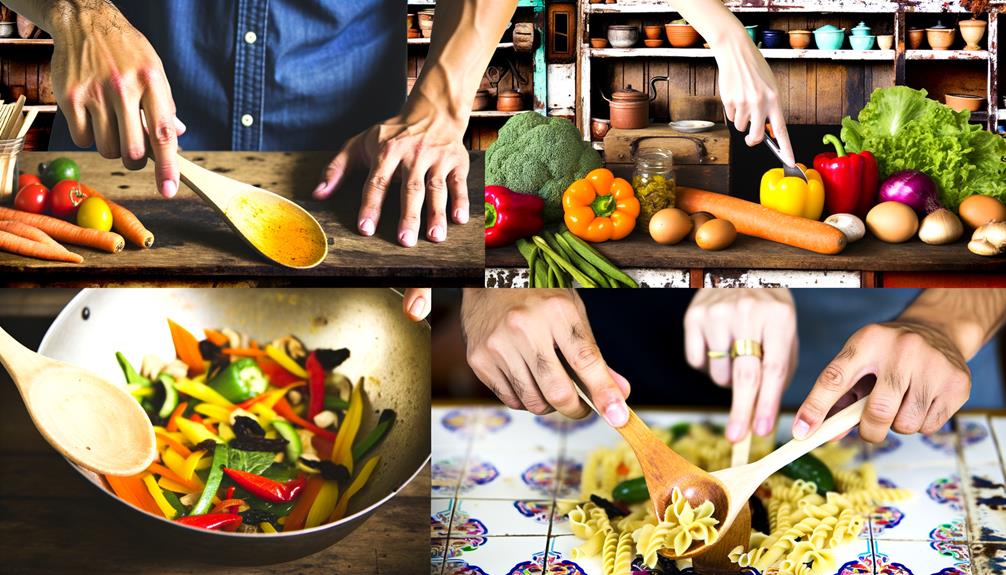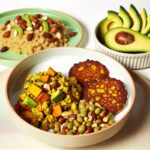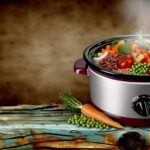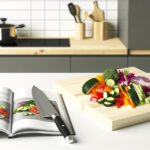You’ve decided to bid adieu to gluten and meat, a brave culinary move that’s not for the faint of heart. Embracing a diet rich in wholesome grains, vibrant veggies, and tantalizing spices, you’re about to embark on a journey to unravel the mysteries of gluten-free, meatless cooking. From the nutty aroma of quinoa flour to the subtle sweetness of coconut cream, you’ll discover a world of flavors that are robust and satisfying. But it’s not just about flavor – it’s about mastering the art of cooking with alternative ingredients and techniques. How do you replace the fluffy texture of wheat flour in your favorite pancake recipe? What’s the secret to creating a hearty, meatless stew that’s just as satisfying as its meat-laden counterpart? As we navigate through the essentials in this culinary adventure, you’ll find that gluten-free, meatless cooking is not just a dietary requirement, but a delightful exploration of taste and texture that will leave you eager for the next bite.
Key Takeaways
- Quality 1:1 baking flour blend is essential for successful gluten-free cooking without meat.
- Alternative grain-free flours like cassava, almond, coconut, and banana can add unique flavors and textures to meat-free gluten-free dishes.
- Understanding gluten-free cooking techniques is crucial for those with dietary restrictions or allergies who want to cook meat-free.
- Mastering gluten-free baking techniques, such as achieving the ideal batter consistency, is important for creating delicious and healthy meat-free gluten-free dishes.
Understanding Gluten-Free Vegan Ingredients
Diving into the vibrant world of gluten-free vegan ingredients, it’s essential to choose a quality 1:1 baking flour blend, combining the delights of white rice, brown rice, sorghum, potato, and tapioca flours. This blend forms the foundation for a wide range of gluten-free vegetarian recipes, allowing you to create a variety of gluten-free meals and gluten-free dinner recipes.
Whether you follow a gluten-free diet for health reasons, or due to food allergies, you’ll find that understanding gluten-free vegan ingredients opens up a world of culinary possibilities. Don’t hesitate to experiment with alternative grain-free flours like cassava, almond, coconut, and banana. Each offers a unique texture and flavor profile, adding a touch of exoticism to your everyday vegan diet.
Mastering Gluten-Free Vegan Baking Techniques
Kneading your way into the art of gluten-free vegan baking, you’ll discover the power of the right flour blend and the magic of alternative grain-free flours in crafting sumptuous, plant-based treats. The journey to delicious and healthy baked goods is paved with simple ingredients and patience.
- Choosing the right flour blend: Opt for a 1:1 baking flour mixture, predominantly made from white rice, brown rice, potato, and tapioca flours. This blend provides a reliable base for most gluten-free and vegan recipes.
- Experimenting with grain-free flours: Diversify your baking repertoire by incorporating almond flour or coconut flour. These flours offer unique, rich flavors that make your vegan recipes stand out.
- Achieving the ideal batter consistency: Aim for a dough-like texture, akin to regular bread dough. This consistency ensures your vegetarian treats won’t have undercooked centers and will hold their intended form.
Creative Gluten-Free Vegan Meal Planning
With a smorgasbord of gluten-free flours and vegan egg replacements at your fingertips, you’ll find a world of creativity unfolds in your kitchen, enabling you to craft a diverse range of delicious, gluten-free vegan meals. Meal planning becomes an art, as you explore new combinations and flavors.
Start your day with enticing gluten-free breakfast recipes. Try a hearty banana and almond flour pancake, made vegan with a flax egg. Add a dollop of nut butter for an added protein kick.
For the main meal, let plant-based foods shine. Consider a roasted cauliflower dish, rich in spices and bursting with flavor, a guaranteed crowd-pleaser as the main dish. This is your chance to show off your creative gluten-free vegan meal planning skills.
Tips for Gluten-Free Vegan Meal Prepping
As you embark on your gluten-free vegan meal prepping journey, it’s crucial to select the right flour, master the consistency of your batter, experiment with egg alternatives, and grasp other essential baking tips for a satisfying and hearty plant-based feast.
Here are some tips:
- Select the Right Flour – Gluten-free meal prep requires quality flour. Experiment with different types to see what works best for your recipes.
- Master the Consistency – Your gluten-free batter should feel like bread dough. This small detail can make or break your baking attempts.
- Experiment with Egg Alternatives – Nut butter, bananas, flax eggs, chia eggs, applesauce, and aquafaba are all excellent substitutes that yield moist, tender vegan desserts.
A Delicious Vegan meal doesn’t require complex techniques. With these simple to make, high protein meal prep strategies, you can easily whip up dishes packed with protein and flavors.
Whether it’s a healthy breakfast for the whole family or an easy to make lunch for yourself, these tools will ensure your gluten-free, vegan meal prep is a success. So now, go forth and serve up some delicious, plant-based goodness!
Exploring International Gluten-Free Vegan Cuisines
Having mastered the art of gluten-free vegan meal prepping, it’s time to broaden your culinary horizons and explore the diverse world of international gluten-free vegan cuisines. Naturally gluten-free, Mexican cuisine provides an easy vegan option. A healthy burrito, for instance, loaded with plant-based ingredients like black beans and fresh veggies, is a flavorful feast that showcases the diversity of Mexican Bean dishes.
When exploring international gluten-free vegan cuisines, consider the vibrant salad recipes of the Mediterranean. Fresh veggies come alive with the addition of aromatic herbs, quality olive oil, and lemon juice. Black bean salads, for example, can be a protein-rich, satisfying meal that’s both easy to prepare and nutritionally balanced.
Frequently Asked Questions
What Is a Meat Substitute for Gluten?
You can replace meat with gluten-free options like tofu, tempeh, quinoa, lentils, beans, eggplant, or jackfruit. These offer plant-based proteins and diverse flavors, especially when enhanced with herbs and spices in your favorite recipes.
What to Avoid When Cooking Gluten-Free?
You’ve to avoid cross-contamination risks, be mindful of hidden gluten in sauces, unintentional sources in baking, and always read labels. Opt for gluten-free grains, spices, dairy alternatives, and alcohol while cooking gluten-free.
Do You Have to Cook Differently With Gluten Free Flour?
Yes, you’ll need to make adjustments when cooking with gluten-free flour. Consider flour alternatives, texture differences, baking adjustments, and recipe modifications. Be mindful of allergy concerns and nutritional differences. Practice makes perfect with gluten-free pasta and bread making.
What Is a Substitute for Seitan?
You can substitute seitan with tofu, mushrooms, lentils, quinoa, chickpeas, jackfruit, tempeh, eggplant, or cauliflower. Each offers unique benefits, versatility, uses, properties, applications, selection, preparations, potentials, and transformations for a flavorful, plant-based feast.







